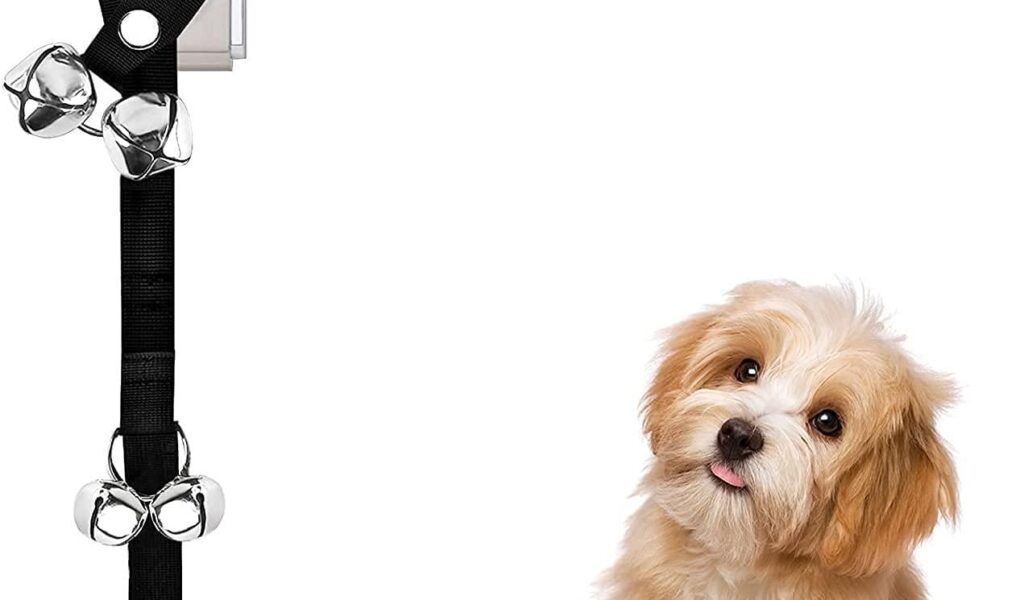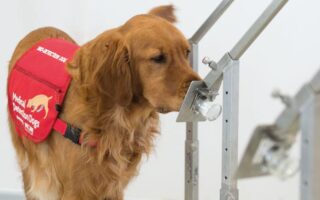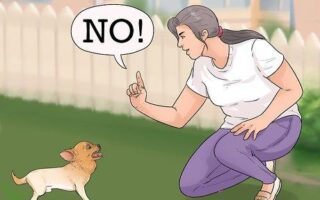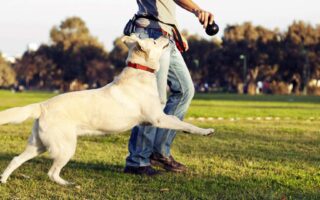In the heart of every home lies a cherished bond between humans and their four-legged companions, but before this relationship can truly flourish, a fundamental skill must be mastered: house training. As excited tail wags and curious sniffs fill the air, new dog owners embark on a journey that promises both challenges and rewarding moments. Whether you’re welcoming a playful puppy or adopting a wise older dog, understanding the nuances of house training is essential for creating a harmonious living environment. In this article, we’ll explore effective strategies, common pitfalls, and the gentle patience required to transform your furry friend into a reliable household member, ensuring that your shared space remains a place of joy and comfort for all.
Table of Contents
- Understanding Canine Behavior for Successful House Training
- Establishing a Routine: Key to Consistency and Success
- Effective Techniques and Tools for House Training Your Dog
- Common Challenges and How to Overcome Them
- Q&A
- In Conclusion
Understanding Canine Behavior for Successful House Training
Understanding your dog’s behavior is crucial to effective house training. Dogs are naturally inclined to establish a routine, and recognizing their signals can help you anticipate their needs. Keep an eye out for common behaviors that indicate your pup might need to relieve itself, such as:
- Sniffing around the house
- Pacing or wandering aimlessly
- Whining or barking to get your attention
- Circling or squatting
To facilitate a smoother training process, establishing a consistent schedule can reinforce appropriate behavior. Regular feedings, bathroom breaks, and playtime can create a predictable environment. Consider this simple table to help organize your dog’s routine:
| Time | Activity |
|---|---|
| 7:00 AM | Morning Walk |
| 8:00 AM | Breakfast |
| 12:00 PM | Midday Potty Break |
| 5:00 PM | Evening Walk |
| 7:00 PM | Dinner |
Establishing a Routine: Key to Consistency and Success
Creating a structured routine is instrumental in successfully house training your dog. Just like humans, dogs thrive on consistency, and establishing regular times for feeding, potty breaks, and play can greatly enhance their understanding of expected behaviors. Here are some key components to include in your daily regimen:
- Feeding Schedule: Offer meals at the same times each day to regulate their bathroom needs.
- Regular Bathroom Breaks: Take your dog out first thing in the morning, after meals, and before bedtime.
- Consistent Commands: Use the same words for commands to reinforce learning.
- Positive Reinforcement: Reward your dog promptly after they go potty in the right place to encourage repetition.
To further support the training process, consider implementing a tracking system for your dog’s potty habits. A simple table can help visualize their progress and identify patterns. Here’s a creative way to keep track:
| Date | Feeding Times | Potty Breaks | Accidents |
|---|---|---|---|
| Day 1 | 8 AM, 5 PM | 9 AM, 6 PM | 1 |
| Day 2 | 8 AM, 5 PM | 9 AM, 6 PM | 0 |
| Day 3 | 8 AM, 5 PM | 9 AM, 6 PM | 0 |
By staying consistent with your routine and keeping track of your dog’s behavior, you’ll pave the way for a successful house training journey.
Effective Techniques and Tools for House Training Your Dog
Establishing a solid routine is essential for effective house training. Start by setting a consistent schedule for meals, bathroom breaks, and playtime. Dogs thrive on predictability, so aim to take your pup outside first thing in the morning, after meals, and before bedtime. This creates a clear association between specific times and potty breaks. Additionally, it’s beneficial to designate a specific potty spot outdoors; this can help your dog understand where it’s appropriate to relieve themselves. To reinforce good behavior, be sure to reward your dog with praise or treats immediately after they go in the right place. This positive reinforcement will motivate them to repeat the desired behavior.
Utilizing effective tools can greatly enhance the training process. Consider the following resources:
- Pee Pads: Great for indoors, especially during bad weather.
- Crate Training: Use a properly sized crate to encourage holding it until let outside.
- Enzymatic Cleaners: Essential for eliminating odors and marking behavior.
- Potty Training Apps: Track your dog’s bathroom habits and progress.
Incorporating these techniques and tools can make the process not only successful but enjoyable for both you and your furry friend. Remember, patience and consistency are key!
Common Challenges and How to Overcome Them
House training a dog can present several challenges, but with patience and persistent effort, these obstacles can be effectively managed. Common issues include inconsistency, accidents, and puppy anxiety. These problems often arise when routines are not established or when the dog feels stressed or overwhelmed. To combat these challenges:
- Set a schedule: Take your dog out at fixed intervals to create a routine.
- Praise and reward: Always positively reinforce successful bathroom trips.
- Limit indoor freedom: Use baby gates or crates to manage your dog’s access while they learn.
Accidents, while frustrating, are a natural part of the learning process and should be handled with care. Ensure you clean up any messes thoroughly to eliminate odors that may attract your pet back to the same spot. Additionally, recognizing signs of urgency can be crucial. Use the following table to help identify those signs:
| Sign of Urgency | Description |
|---|---|
| Circling | The dog may begin to circle in one spot. |
| Whining | A sign of discomfort or need to relieve themselves. |
| Sniffing | Dogs often sniff around when they need to go out. |
Q&A
Q&A: House Training a Dog
Q1: What is house training, and why is it important for dogs?
A1: House training, often referred to as potty training, is the process of teaching a dog where and when it is appropriate to relieve itself. This practice is crucial not only for keeping your home clean and odor-free but also for fostering a positive relationship between you and your furry friend. A well-trained dog feels secure in their environment and understands the boundaries you set.
Q2: At what age should I begin house training my dog?
A2: It’s best to start house training your dog as early as possible, typically when they are around 8 weeks old. Puppies have developing bladders, so it’s a crucial time for learning. However, older dogs can also learn new habits, so don’t be discouraged if you’re starting later than 8 weeks.
Q3: What are the essential tools I’ll need for training?
A3: You’ll want some basic supplies: a crate or a designated space for your dog, potty pads or newspaper for indoors, rewards (like treats or praise), and a consistent feeding schedule. A clock or timer can help remind you when it’s time to take your dog outside too.
Q4: How do I establish a consistent routine for my dog?
A4: Dogs thrive on routine! By taking your dog outside at regular intervals—such as after meals, naps, and play sessions—you’ll help them understand when and where to go. Be sure to follow a consistent schedule, repeating the same phrases each time to signal that it’s potty time.
Q5: What are some common mistakes to avoid while house training?
A5: A few common pitfalls include punishing your dog for accidents, which can create fear and confusion; not providing enough opportunities for bathroom breaks; and failing to supervise your puppy closely. Remember, patience and positive reinforcement are key—every puppy learns at their own pace!
Q6: What should I do if my dog has an accident indoors?
A6: Accidents happen! Stay calm and simply clean up the mess without scolding your dog. Use an enzymatic cleaner to eliminate any lingering odors that might encourage a repeat performance in the same spot. Instead, redirect your dog to the appropriate place next time and reward them when they go outside.
Q7: How long can I expect the house training process to take?
A7: Every dog is unique, so training times can vary. Some dogs may grasp the concept within a few weeks, while others may take several months. Remain consistent in your approach, and celebrate small victories along the way—progress, no matter how incremental, is still progress!
Q8: Can I train an adult dog, or is it too late?
A8: It’s never too late! Adult dogs can indeed be house trained, although it might take a little longer and require more patience. Understanding their previous living conditions and adjusting your training strategy can lead to successful outcomes, so don’t be discouraged!
Q9: What role does positive reinforcement play in house training?
A9: Positive reinforcement is essential in house training. Rewarding your dog with treats, praise, or playtime immediately after they go in the right place helps them make the connection between their actions and the reward. This creates a positive association and encourages them to repeat the behavior in the future.
Q10: Any final tips for successful house training?
A10: Stay consistent, be patient, and celebrate every little success. Keep a close eye on your dog for signs that they need to go, and always have treats handy for rewarding good behavior. Moreover, don’t forget to enjoy the bonding experience this training provides—it’s a valuable time that strengthens your relationship with your furry companion!
In Conclusion
As you embark on the rewarding journey of house training your dog, remember that patience and consistency are your most reliable companions. Each paw print marks a step towards establishing a harmonious coexistence, where trust and understanding flourish. Embrace the small victories and learn from the occasional setbacks, as they are all part of the adventure. With time, your diligent efforts will bloom into a well-mannered companion, bringing joy and balance to your home. So, gather your training tools, prepare your heart, and get ready to foster an unbreakable bond with your furry friend—one wagging tail at a time.



